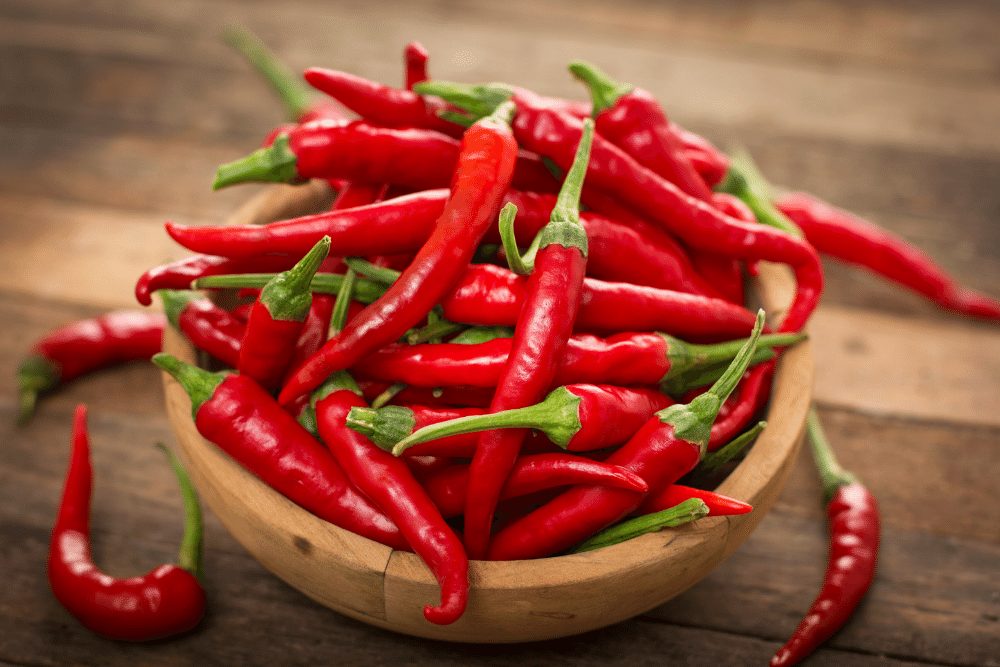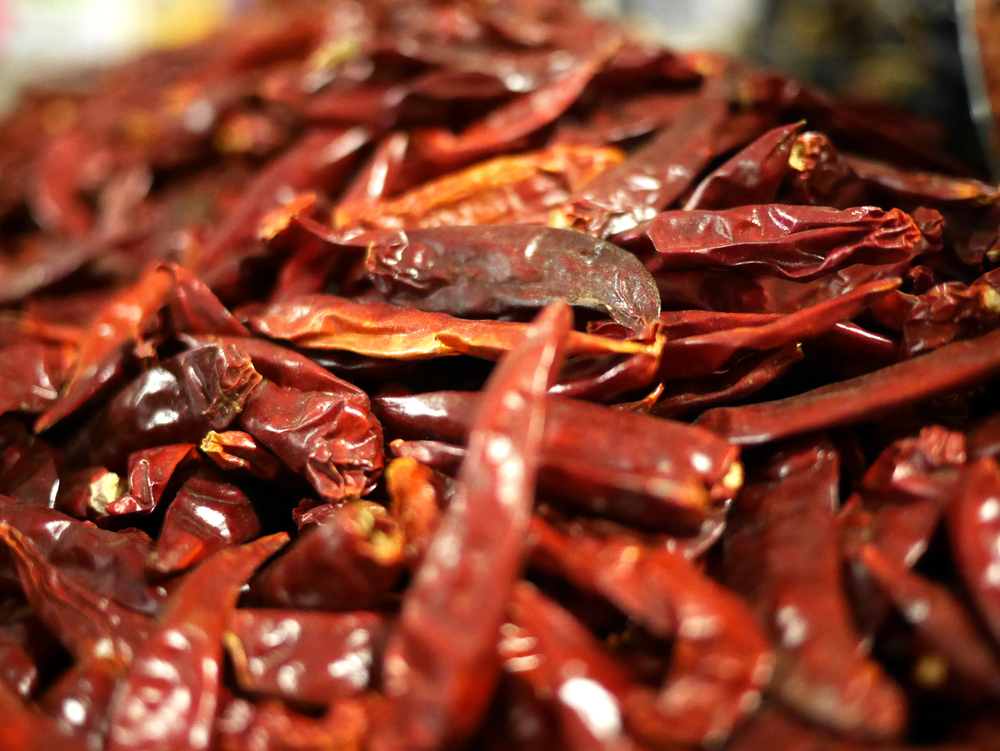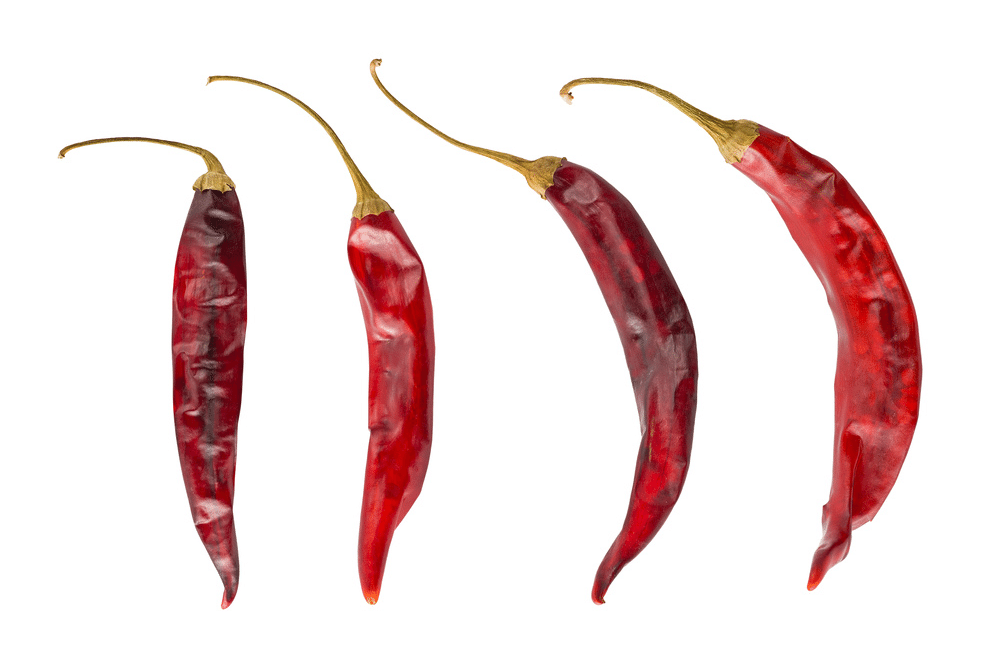Puya pepper, a cousin of the Guajillo pepper, adds unique fruitiness and heat to traditional Mexican dishes. Sometimes called the pulla pepper, the puya is often used dried and then reconstituted, adding a medium heat and cherry undertones to the recipes in which it’s featured.
What Are puya Peppers?
The puya pepper is a Capsicum Annuum native to Mexico City and Mexico’s central valley. It has a long history of being cultivated and used throughout this area and is a staple in most Mexican kitchens. They’re favored for their unique combination of fruity flavor and medium heat.
Ranging from 3-4 inches in length, these chilis are typically allowed to ripen to a deep red before harvesting and then dried rather than eaten fresh. This process results in the dark crimson color of the puya.
While a regular ingredient in Mexican cooking, they’re more difficult to find outside of Mexico.

How Spicy Are puya Peppers?
Puyas are a medium hot chili pepper, measuring between 5,000-8,000 Scoville heat units (SHU). This makes them hotter than a jalapeno but not as hot as their close cousin, chile de arbol.
The following chart can provide perspective on where the puya falls regarding heat level.
- Habanero pepper, 200,000-350,000 SHU
- Chile de arbol, 10,000-20,000 SHU
- Puya pepper, 5,000-8,000 SHU
- Jalapeno pepper, 2,500-8,000 SHU
- Pasilla pepper, 1,500-4,000 SHU
What Does puya Chile Taste Like?
While many peppers have a fruity flavor, the intensity of this fruitiness is stronger in the puya than in many other peppers. Notes of cherry, licorice, and citrus combine with a smokiness that’s unlike the flavor profile for most other chilis.
This combination of sweetness and heat creates one of the flavors found in traditional Mexican cuisine,
Are puya Peppers And Guajillo Chilis The Same?
Puya peppers and guajillo chilis share several similarities, but there are not the same thing.
They are both long and thin with a dark red color, but puyas are smaller. Puya peppers also have a higher Scoville rating, bringing more heat to the party than the guajillo chili (2,500-5,000 SHUs).
Guajillos are more widely known and utilized outside of Mexico, most likely due to their lower relative heat and availability.
How To Use puya Peppers
Puya peppers are incredibly versatile, especially if you enjoy a little heat. They are a common ingredient in many Mexican dishes.
To use them, however, you’ll need to prep them properly. Doing that generally entails rehydrating by soaking them in warm water for approximately 10 minutes. Sometimes the chilis will be roasted first to create additional smokiness.
Once soft, puyas are either diced to add to dishes or pureed and used to create a salsa or sauce.
Some of the most common uses include:
- Seasoning or marinade for chicken, pork, or beef
- Sauce for enchiladas
- Base for soups or stews
- Chutneys for meat
- Filling for burritos or in a sauce over top
- Salsa or table condiment to add or be used as a dip for tortilla chips
A quick search will net many different recipe options that feature puya peppers. Many include combining the puya with other dried chilis like guajillo or ancho. If you like guajillo sauce, try adding a couple of puya peppers to your favorite recipe to up the heat!
If you’re feeling adventurous and a fan of enchiladas, this puya chile enchilada aauce is delicious and easy.

Where To Buy puya Peppers
If you’re looking for the whole dried chili, certain specialty or Mexican markets may carry them, but they’re not easily found in mainstream grocers. If you’re not in a hurry, they can be ordered from several online retailers, including Amazon.
Purchasing whole puya chilis outside of Mexico can be a challenge. Finding spices that include puya chilis or ground puya chili powder is becoming easier, and depending upon your recipe, that may be all you need.
Can You Grow puya Chiles?
If finding puya chilis in your local markets hasn’t yielded any results, you may have better luck growing your own.
Pepper plants generally aren’t difficult to grow, and puyas are no exception. They can be grown in the garden or pots and, under the right conditions, can produce fruit for several weeks.
Some important things to keep in mind:
- If growing from seed, they’ll require a minimum temperature of 68 degrees Fahrenheit to germinate.
- Puyas need warm weather to produce. A consistent temperature of 86 degrees Fahrenheit or warmer is required. Germination can take 7-10 days.
- They don’t like overly wet soil, so watering only when the soil has dried out should be sufficient.
- Although they produce best in warm weather, direct hot afternoon sun can create sunburn and damage your plants. If you live in an area where temperatures reach 100 degrees Fahrenheit or more, consider shading your plants in the afternoons.
- Pick puya peppers when they’ve turned dark red.
Finding seedlings in nurseries for transplant might be challenging, but seeds are readily available online.
Once you harvest puya peppers, you’ll need to dry them to use them in a traditional manner. This requires either a food dehydrator or hours in an oven set to a low temperature.
Substitutes For puya Peppers
If you can’t find puya chilis and growing and preparing your own sounds like a chore, you’re in luck. Several suitable substitutes can work and provide a similar flavor.
- Guajillo chilis. Probably the most similar in flavor but not nearly as spicy.
- Arbol chilis. Similar flavor but much hotter than the puya.
- Chipotle chilis. These have a different and much smokier flavor and are similar in heat profile. They won’t make a seamless substitute, but the heat and flavor might be the right twist to your recipe if you’re getting creative.
- Cascabel chilis. Cascabels, sometimes called the “rattle” chile, aren’t as hot as the puya and are slightly smokier in flavor. But they’re easy to find and can add flavor and heat to recipes.
A common practice when looking for a puya pepper substitute is to use a combination of some chilis above. Guajillo and chile de arbol make the best combination and closely replicate the puya. And since the mixture is yours to create and customize, you can manipulate the ratios depending on whether you like intense heat or a mild burn.

